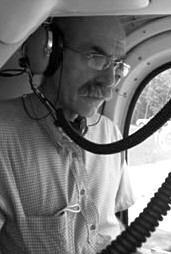
Although an ornithologist by training, Tim Reed has a background in monitoring and data quality- starting with standardising management planning and data recording for the statutory sector, moving on to developing the widely-used Common Standards site condition model.
After a long period introducing peer-reviewable data and biodiversity and ecosystem reporting models in big corporates around the world, Tim has spent the last few years working on data quality and the truly incredible material produced in support of development proposals in the UK.
Comments and issues appear regularly in his blog.
Two years of proxy counting
Back at the start of the pandemic I started what I called proxy counting birds on my local river eyot. Cut off from direct site access, I instead looked and listened from the nearby townside bank, and then, in the last year, also from the opposite side of the eyot on the flood meadow bank. Two differing views, but adding the second side gave me a better reflection of the habitats and bird communities on the eyot. The brick townside bank gives me a view of a skirting reed fringe, willows young and old, and the gently oozing by-water that wends its way back to the main river. The river proper is more muscular, and the habitats seen from there are also just that bit more substantial. The reed bed is big enough to be its own habitat, and the alders form their own block, rather than a tree here or there. By adding the second recording side to the eyot I’ve added new species, and confirmed the location of some of the birds heard from the townside bank. Reed buntings have appeared, barn owls have been seen, and water rails heard. Corn buntings have been spotted flitting in from the meadow, and even an errant peacock landed. In a review of the first year of counting (Proxy Records, 3 March 2021), I noted that many of the birds seen and heard were also mirrored by the on-site ringing project. In the last year or so, the ringing list has sometimes been ahead: the water rail was caught first, and heard second, and the corn buntings were only added to the proxy list after being caught and ringed. At 74 species, and counting, the peripatetic record is ahead on barn owl, Egyptian goose, peacocks, and common sandpipers amongst others. Overall, it looks like there are now increasingly similar lists from ringing and proxy recording. The third leg of the stool is now comparing the detailed breeding bird survey mapping with those proxy and ringing records. Mapping the whole of the eyot will confirm not just which, but where, birds occur on the island. That is another story. Just one aside: both ringing and recording are effectively early morning pursuits. Both picked up the first sightings of the otter that spent the winter on the eyot: crunching its way through most of the local bream and pike populations. Both now agree the otter has departed the immediate area, for the moment at least. Whether the ringers or watchers find it first this winter is a moot point.
[registration_form]